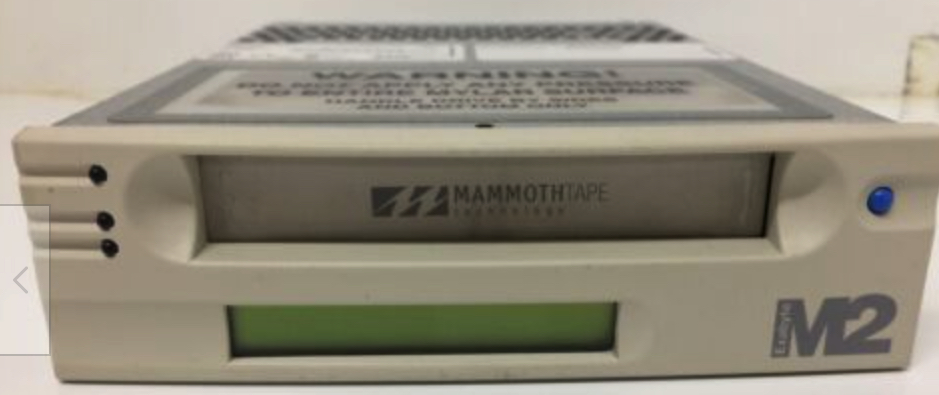History 2001: Will Exabyte Halt Mammoth-2?
You bet
By Jean Jacques Maleval | January 19, 2023 at 2:37 pmWhenever a company is officially considering, along with other alternatives, of course, the “sale of all or part of the company’s operating assets… a strategic alliance, acquisition or merger,” as Exabyte recently announced, you know things are bad.
And when, in order to fix things, the company in question hires a firm like Broadview Technology, specialized, as it happens, in consulting on mergers, acquisitions, restructuring and private financing, there’s not just smoke, there’s a fire.
The entire future of Exabyte’s tape cartridge drive activity – its core business – was played out in 2H00. In that short window of time, there still remained a slim hope that the company might score a win with its 8mm Mammoth 2 or M2 (60/12), then the record-holder among tape drives for open systems, both in terms of capacity and transfer rate.

It happens before the onslaught arrival, at the end of 2000 and start of 2001, of the Quantum-HP-IBM-Seagate relay, with SuperDLT for the first, LTO for the three others, even if the SDLT/LTO battle somewhat up-staged M2.
Today, however, that window of opportunity is shuttered closed. More specifically, a close look at Exabyte’s figures for its last quarter of calendar year 2000 speaks volumes: the revenues derived from stand-alone drives are lower than that of the previous quarter. M2 did not take off, and now it never will.
The stock market believed in it for a short time, until the end of October, when share prices rose to $12.60, before crashing to $1.75 on January 9, earlier this year.
Confidence in the company in its current state has evaporated. And in a further stroke of bad luck, Exabyte continues to experience difficulties with its cartridge manufacturers – the media business was essentially flat for 4Q00.
It’s frankly amazing that chairman and CEO Bill Marriner, perhaps relying on feints from his former basketball days, has managed to keep the company afloat as long as he has. It’s unthinkable that Exabyte put more money on the table to accelerate the release of the next product, M3, with or without help from partner Hitachi.
What chance for success would M3 have that M2 didn’t have? None.
Exabyte can’t even continue with its current model, which is racking up losses with each passing quarter.
Quite simply, the firm can’t continue to manufacture drives. Even if it subcontracts production of M2, the device won’t sell any better.
The other 8mm drive competition, for that matter, AIT-2, has not enjoyed much success either, and we’ll have to wait to see if Sony really goes through with plans for AIT-3.
Market share for these 8mm is flat and will remain so.
Could the 2 technologies try to work together? Hard to see, since in the end they’re fairly different, with only the cartridges resembling each other.
So it is that DLT finally managed to eliminate, almost entirely, 8mm technology, which nevertheless was the dominant format not so very long ago.
It was difficult enough when it was only faced with SDLT, but then to take on LTO and heavyweights such as HP, IBM and Seagate was the killer blow.
All that remains for Exabyte now is to focus on what it does best, libraries – whether for 8mm, DLT or LTO. In fact, all the data confirms this. In this area, its sales have grown from $15.5 million to $25.2 million from one year to the next for the fourth quarter, up from $21 million in 3Q00.
Of course, the company will have to slim down some more, but at the very least, it will have a good chance of staying alive, even of returning to profit, when you consider the steady quarterly net income of rival library makers such as Adic, Overland or Qualstar.
This article is an abstract of news published on issue 158 on March 2001 from the former paper version of Computer Data Storage Newsletter.













 Subscribe to our free daily newsletter
Subscribe to our free daily newsletter

